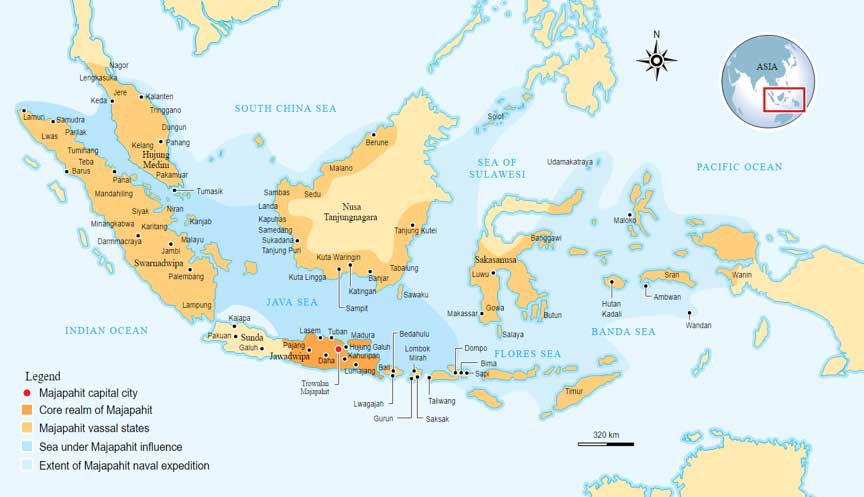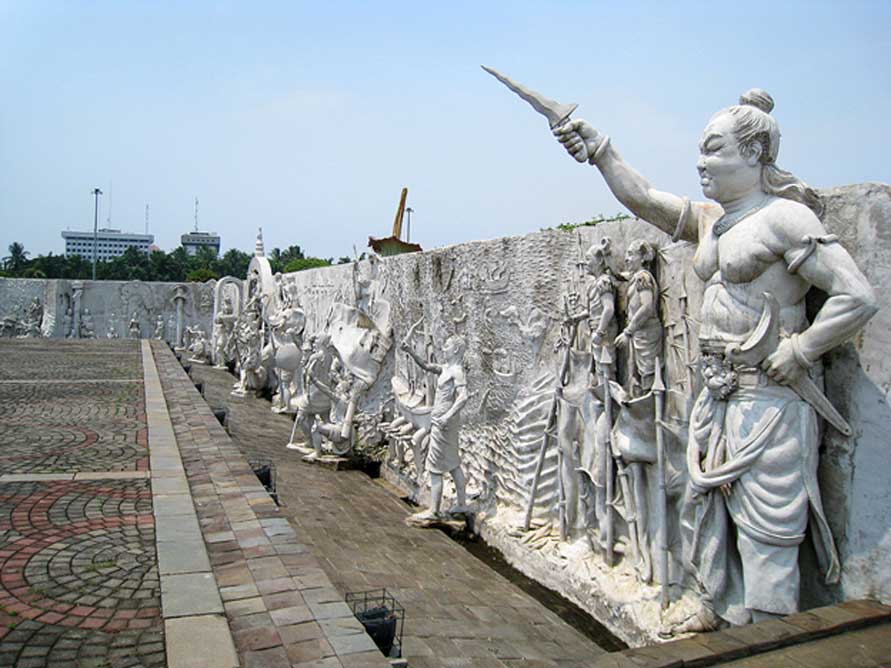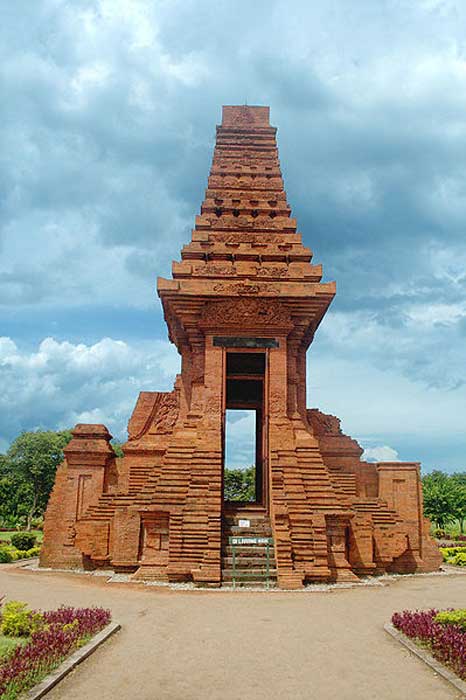
The Hidden Mastermind and Warrior Queen Behind an Empire’s Golden Age
The Majapahit Empire was a vast empire on the island of Java from 1293 to 1527 CE, which later became part of modern Indonesia. It was an empire of 98 tributaries, stretching from the island of Sumatra to New Guinea, and it is said to have encompassed what are known now as the majority of Southeast Asia. Although the true nature of its scope of influence is still the subject of studies among historians, Majapahit was one of the last major empires of the region and is considered to be one of the greatest and most powerful empires in the history of Southeast Asia, as well as the empire that sets the precedent for Indonesia's modern boundaries.

Location of Majapahit Empire (CC BY-SA 3.0)
The picture of a powerful empire politically and culturally dominating the whole of the Indonesian Archipelago is attached to the “Golden Age” of Majapahit in the fourteenth century. It was the time of the famous poets Prapafica and Tantular, and of the sculptors of reliefs that have been preserved on the Surawana, Tigawangi and Kedaton temples. The two men largely credited for this success are the great king Hayam Wuruk (1350-1389 CE) and the prime minister Gajah Mada—both their names and likenesses are still venerated in the region today. Gajah Mada especially is credited with bringing the empire to its peak of glory and serves as an important national hero in modern Indonesia—a symbol of patriotism and national unity.

The haute reliefs of Indonesian history encircling National Monument, Jakarta. On northeastern corner depicting ancient empires of Indonesia, at the nearest right is Gajah Mada, the prime minister of Majapahit empire. (CC BY-SA 3.0)

Kedaton Temple (CC BY-SA 3.0)
However, paving the way for the two men was a warrior queen who is, by contrast, rarely mentioned. Born as Dyah Gitarja, she was later known in history by her title Tribhuwana Tunggadewi (“The Exalted Goddess of the Three Worlds”), and she was the woman who set in motion Majapahit’s dominance.





